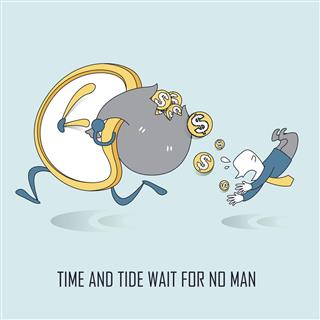
The theories put forth by scholars and philosophers help us understand the importance of time in every sphere of life. A few such important theories are explained in this article. Have a look…
Understanding the importance of time management is essential for everyone. A conscious control when imposed over the amount of time spent in doing day-to-day activities would enable you to divide your priorities and set a deadline for them. Thus, you would be able to accomplish tasks within the set time limit. Time management is possible by understanding the theories, principles, and techniques proposed by scholars and philosophers who have understood its significance in life. Studying the time management theories would help you to organize, plan, and schedule your responsibilities, activities, and the most coveted goals of your life in the right manner. And then, you can channelize your energy towards that specific direction to increase your productivity.
Unless you have a clear concept regarding the purpose of your life, you cannot frame an effective time management strategy. Whether it is your personal or your professional life, you should know what to do and how much time you will require for different tasks. The tool and techniques are dependent upon your work and the amount of time required for completion. Here, we shall refer to the most popular theories that help people understand the importance of time management in every sphere of life.
Vilfredo Pareto was an Italian economist and philosopher who formulated the 80-20 rule. His observations were based on the fact that 80% of the land in Italy was owned by 20% of the population. His research work became the thumb rule of many business organizations, where 80% of productivity came from 20% of the working employees. This 20% comprised the most efficient people who conducted their work within a specific span of time, thereby contributing to the high rate of productivity. Based on this theory, business and quality management pioneer Dr. Joseph Juran said that, “vital few, trivial many”.
The 80-20 rule could be applied everywhere where time plays a major role to uplift productivity and the success of organizations. The key element of this theory is the 20% that matters the most. If you consider all the things that you are doing the entire day, you will actually find out that it’s the 20% of your work that produces the net result. Thus, you should try different ways that will allow you to effectively manage the minor portion. Within the limited time (20%), you have to categorize your work and activities for achieving the goals in your life.
The pickle jar theory is very simple to understand and execute. The experiment is actually a time management model, that will aid you in prioritizing your work and in reaching the milestones of your life. To understand the concept, you can try it out practically. Take a pickle jar and fill it with rocks. You observe that the spaces in between the rick stones could be filled up with pebbles. The jar becomes more compact after filling it with pebbles, but still there are inconspicuous spaces that can compacted with sand. Now, pour water over it and close the lid.
The pickle jar is the replica of your life. The major responsibilities of your life or your goals are represented by the rocks that occupy most of the space. This infers that, you should dedicate more time to such goals. The chipped stones or the pebbles symbolize your hobbies, that require comparatively lesser time than the important goals. Lastly, the daily chores of your life are the sand particles, that get placed perfectly between your goals and hobbies. The distractive force in your life that takes away your attention from the path of success is the water. Apart from teaching us the right way to manage time, this theory also makes us aware of the fact that distractions that lead to mismanagement should be avoided completely in order to follow the right track.
Also known as the theory of hierarchy of needs, Abraham Harold Maslow, an American professor on psychology, effectively combined time management with our needs. He built a hypothetical pyramid, where our physiological level needs (food, water, shelter, etc.) were put at the base of the pyramid, while self actualization was placed on the top of the pyramid. In between these two extreme levels, safety, human bonding, and self-esteem were positioned. The 5 levels were examples of different strata of human life.
The theory doesn’t specify the time period required to attain them, but it actually helps you to understand the importance of these elements in your life. Once you understand your needs, you can differentiate between them and set a time period during which you can fulfill them. For example, the first motive behind earning money is to meet the physical demands of our body, and then we become capable of taking care of our family and other concerns. A greater portion of our life and most time is dedicated to improving standards of living by satisfying ourselves in every possible way. Once we have plenty of resources to spare, we knock at the door of self actualization, that requires minimum time. You can plan your road map by referring to the theory of hierarchy of needs with incorporation of effective time management strategy.
With these theories, I am sure you have understood the significance of time and how to manage it efficiently. In short, we can contrive the concept from the wise lines of Ralph Waldo Emerson, “this time, like all times, is a very good one, if we but know what to do with it”.






















